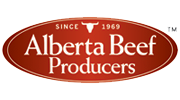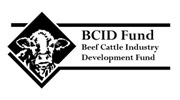Increasing Silage Yield and Quality
| Project Code: | 0007-054 |
| Completed: | April 2012 |
Project Title:
Measuring and breeding for fiber digestibility in cereals
Researchers:
Dr. Patricia Juskiw patricia.juskiw@gov.ab.ca
Patricia Juskiw, PhD, Mary Lou Swift, PhD, James Helm, PhD, Joseph Nyachiro, PhD, Donald Salmon, PhD, Mazen Aljarrah, PhD (Alberta Agriculture and Rural Development Field Crop Development Centre), Masahito Oba, PhD (University of Alberta), Walter Pitz, PhD (Parkland Laboratory)
Breeding work on cereal crops often focuses on grain characteristics (particularly protein content) and yield, but these may not always make the best silage. For example, the fiber structure in the stem that leads to lodging resistance may also cause the silage to be less digestible.
Fibre content of forages are usually measured using acid and neutral detergents. Acid detergent fibre (ADF) contains cellulose and lignin, while neutral detergent fibre (NDF) contains hemicellulose, cellulose and lignin. Lignin is the most indigestible component of fibre in the rumen, so the more lignin a silage contains, the less digestible it will be. Lower digestibility results decreased intake and rate of gain. Unfortunately, the traditional measures of silage fibre (ADF, NDF) have recently been shown to have little in common with actual fibre digestibility in the rumen.
Measuring fibre digestibility in the actual rumen (or in the lab with rumen fluid) is time consuming and costly. Therefore, researchers have turned to a relatively new technique called near infrared reflectance spectroscopy (NIRS). NIRS can determine the composition of a material by analyzing the wavelength and quantity of light reflected from that material. This project intends to provide a solid basis for equating NIRS measurements with in-vitro fibre digestibility (IVFD), the current gold standard for fibre digestibility measurements.
Objectives:To develop a rapid and effective measurement of IVFD using NIRS, determine quality differences in small grain cereal forages due to IVFD, and explore genetic components that may influence IVFD.
What They Did:609 samples of cereal forage grown at Lacombe during 2005, 2006, and 2007 were evaluated for ADF, NDF, and NIRS absorption at the lignin wavelength. 265 samples were selected for determination of IVFD and lignin concentration. A subset of 144 samples was measured for starch content. Samples from at least 2 crop years were included (whenever possible) to evaluate genotype X environment effects on IVFD and lignin content. Based on the results of the actual measurements, equations were developed to predict IVFD, starch and lignin content. Trial plots were planted in Dawson Creek and Lacombe to evaluate yield and grain quality in 2008, 2009, 2010, and 2011. Crude protein, ADF, NDF, IVFD and lignin concentration was also determined from samples from these field trials and that data was added to the calibration equations. Each year, a number of barley and triticale test plots (including control plots with check cultivars) were grown out for forage quality in the Dawson Creek location.
For the genetic studies, they researchers focused on a variety of barley called Falcon (6-row hulless), which is assumed to have higher IVFD due to research results from dairy cattle. They crossed Falcon with a number of other varieties in order to see if the improved digestibility could be moved to both 2-row and 6-row hulled varieties. The triticale varieties Bunker, Pronghorn and 99L003001 were also crossed to see if improvement in IVDF could be made.
What They Learned:Mean values for IVFD in barley were not different between the hulled and hulless varieties, but a larger variation existed at the extremes for hulless barley. In barley, sporadic correlations were observed between IVFD and other forage quality and agronomic characteristics, but these correlations were not consistent over multiple years, which indicates that selection for IVFD in barley will likely not affect other traits. Although environmental influences caused the most variance in the traits of interest, the large degree of variability in IVFD within varieties means that selection for this trait would produce results.
In terms of triticale, significant genotype X environment effects existed for ADF, NDF, starch, lignin and IVFD, which means that different varieties performed differently in the Dawson Creek and Lacombe locations. In triticale, many of the important quality and agronomic traits were significantly correlated with IVFD, indicating that selection for improved IVFD will impact other traits, and care must be taken to consider the effects on those other traits. In general, the IVFD of triticale was lower than that of barley.
While examining the Falcon x Tyto cross barley population, it became apparent that IVFD is likely controlled by several genes. Growth room and field data differed significantly in terms of which traits were the most important traits associated with IVFD, indicating that environmental effects are confounding efforts to discover the underlying genetic mechanisms controlling IVFD expression.
What It Means:NIRS can be used to accurately predict IVFD and other forage quality traits much more quickly and cost effectively than traditional wet chemistry. The agreement between NIRS predicted IVFD and IVFD determined using the traditional method was over 90%. The wide range of IVFD within barley and triticale means that improvements through selection can be made, even with the impact that environment has on the expression of this trait.
Based on results from 2010 and 2011, 87 lines with improved IVFD and excellent agronomic traits were entered into the first year yield tests as part of the Field Crop Development Centre’s breeding program. The six best lines have entered second year yield testing, and it is expected that new varieties will be registered with improved IVFD, once testing is complete. The researchers are currently working on developing genetic markers for IVFD, as well as determining how the development of lignin and starch affects IVFD. In addition, NIRS calibrations are in the process of being developed on green chop to eliminate the need for drying and grinding, which will make the process more efficient.











